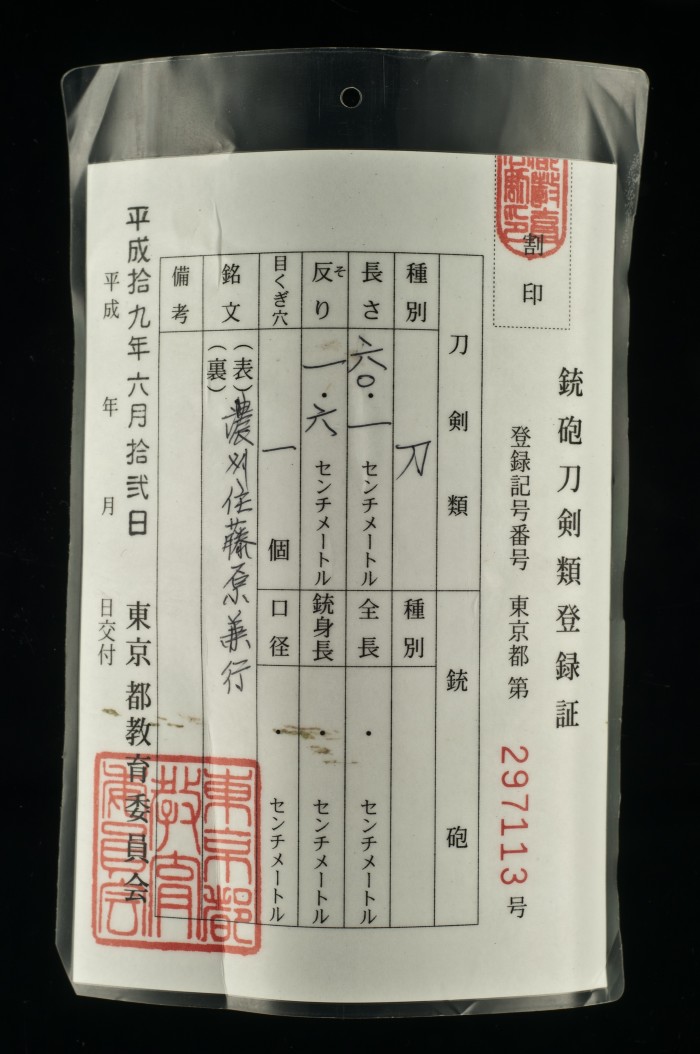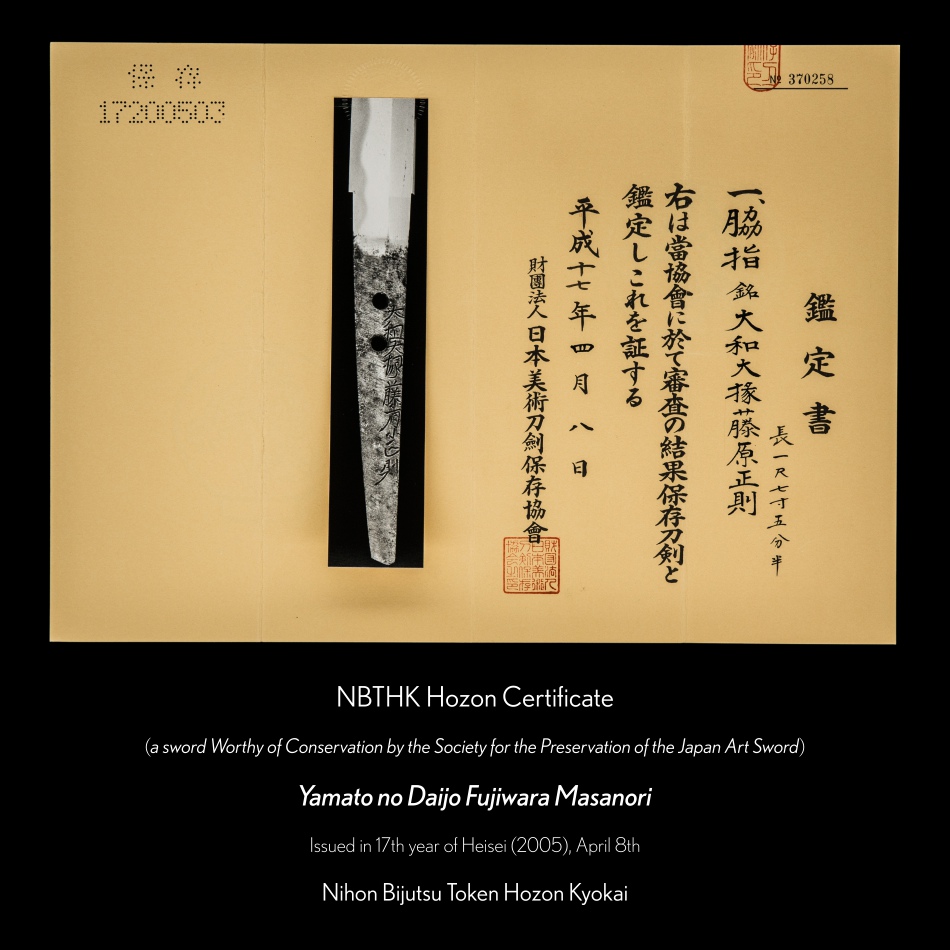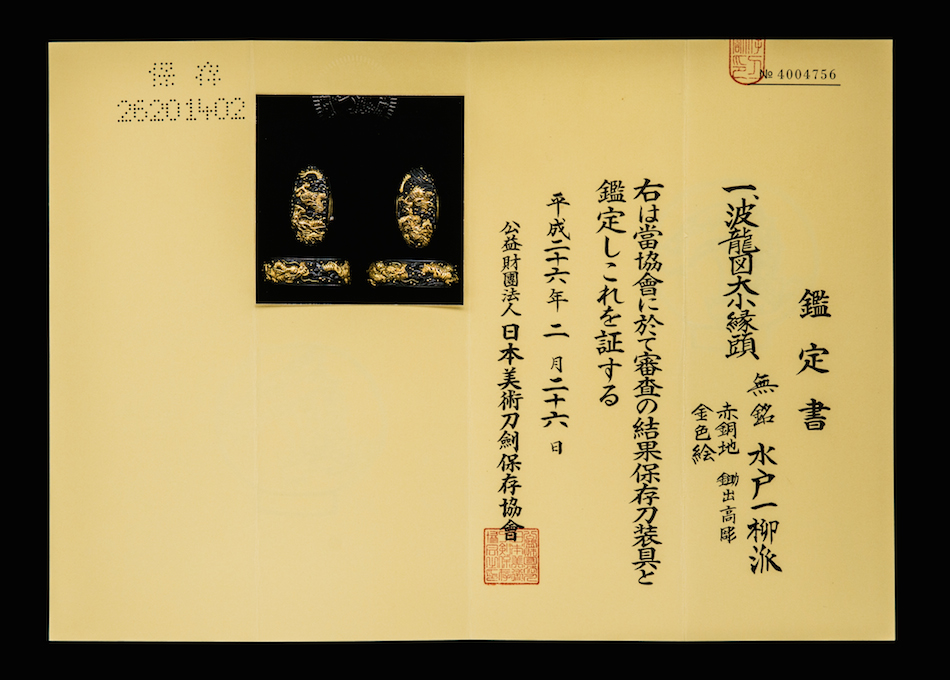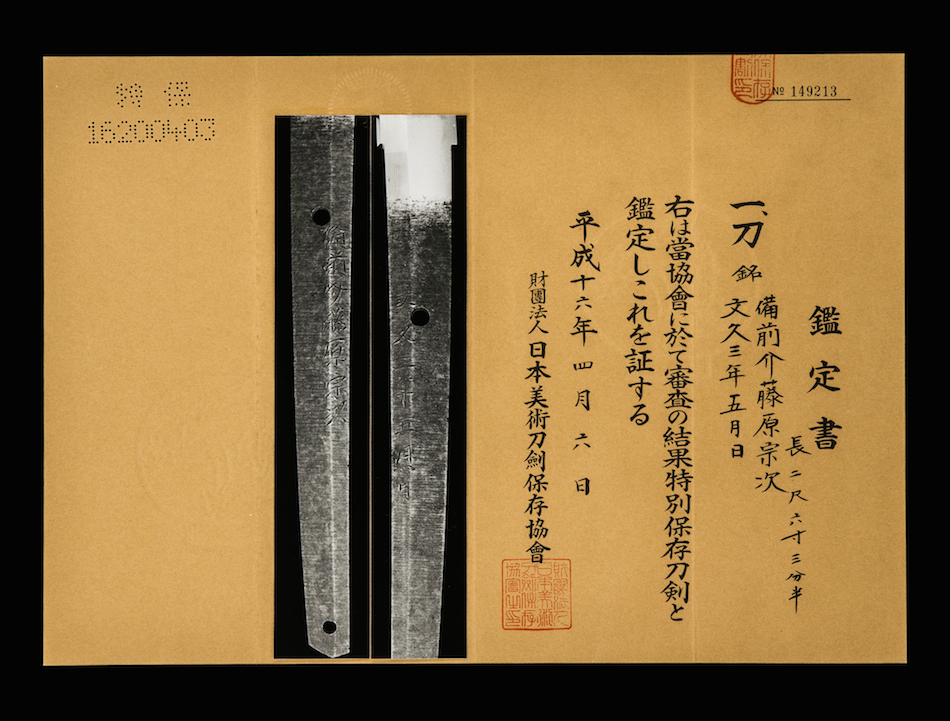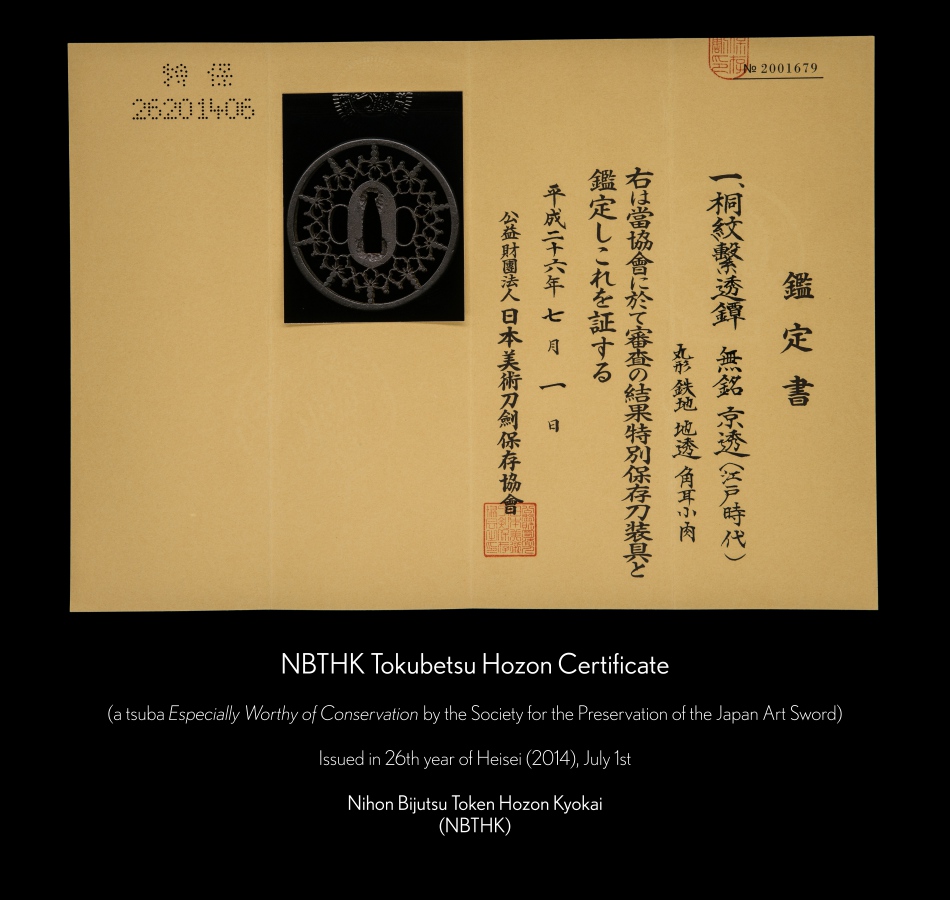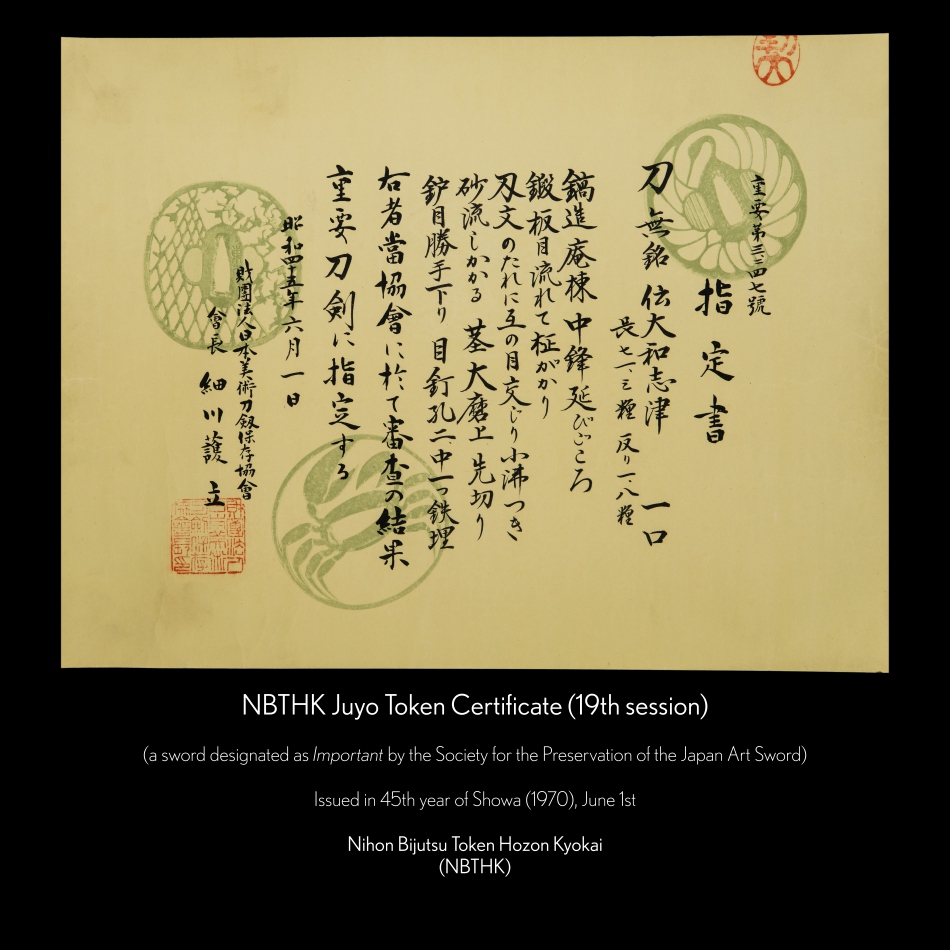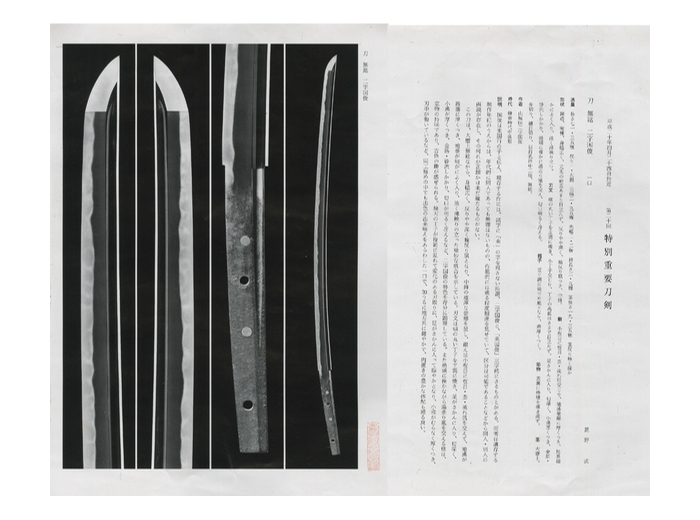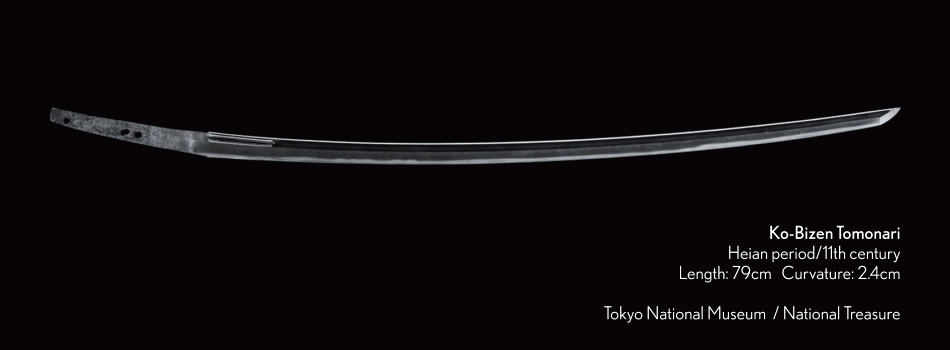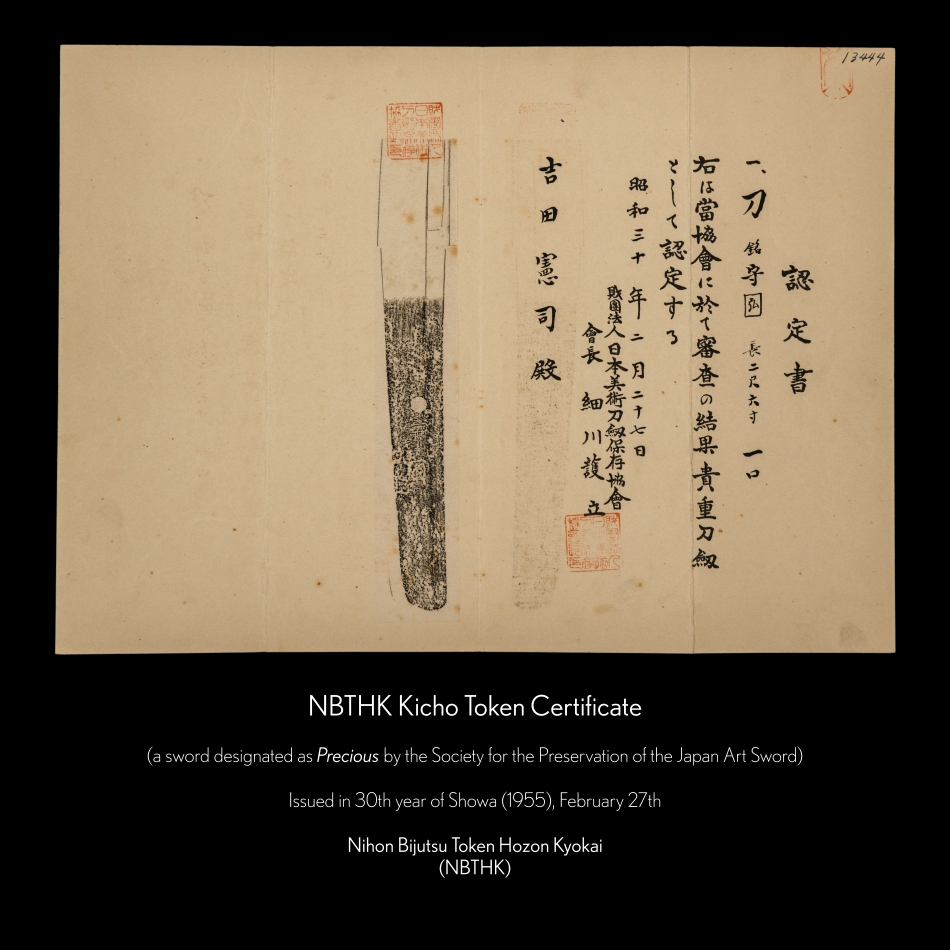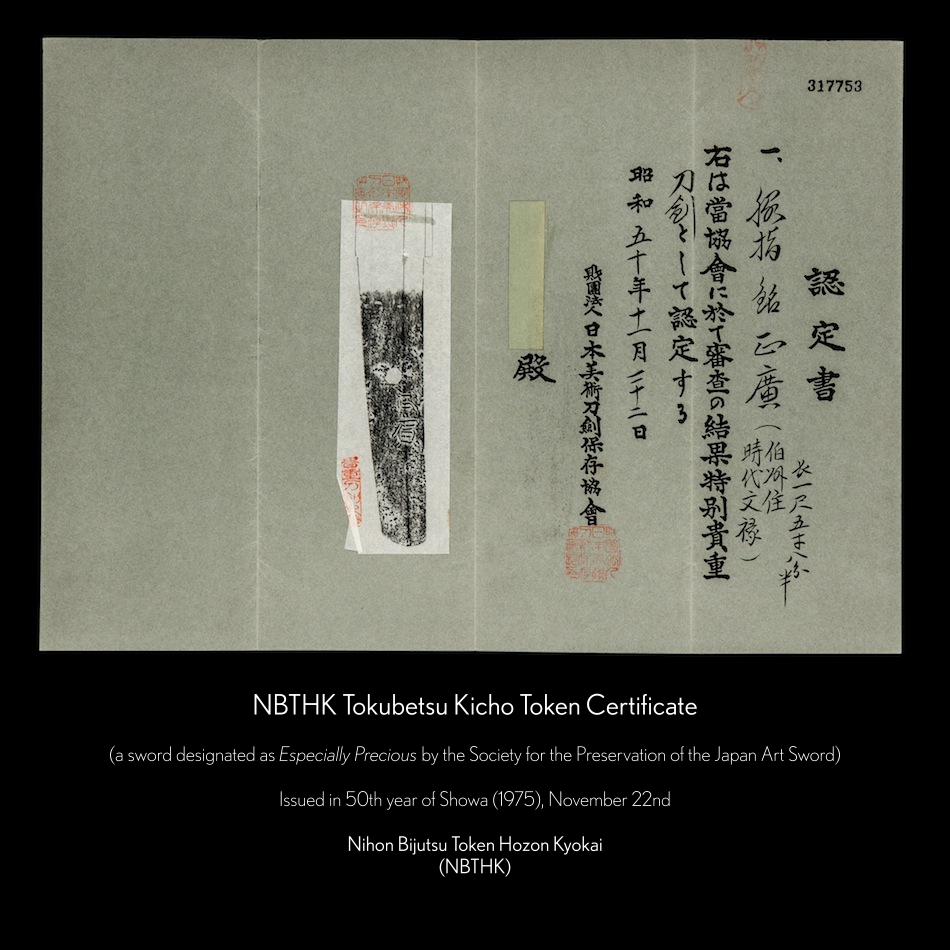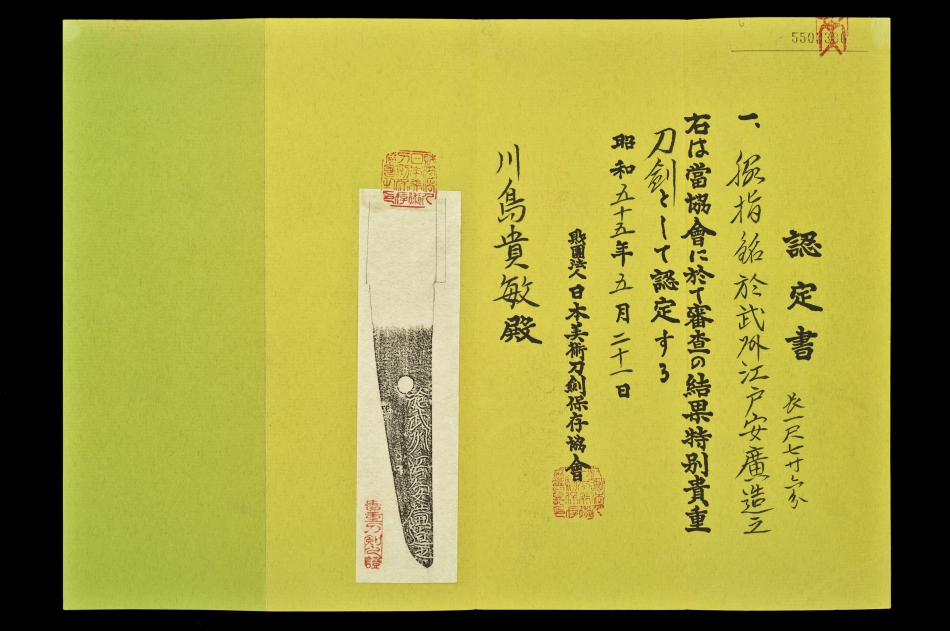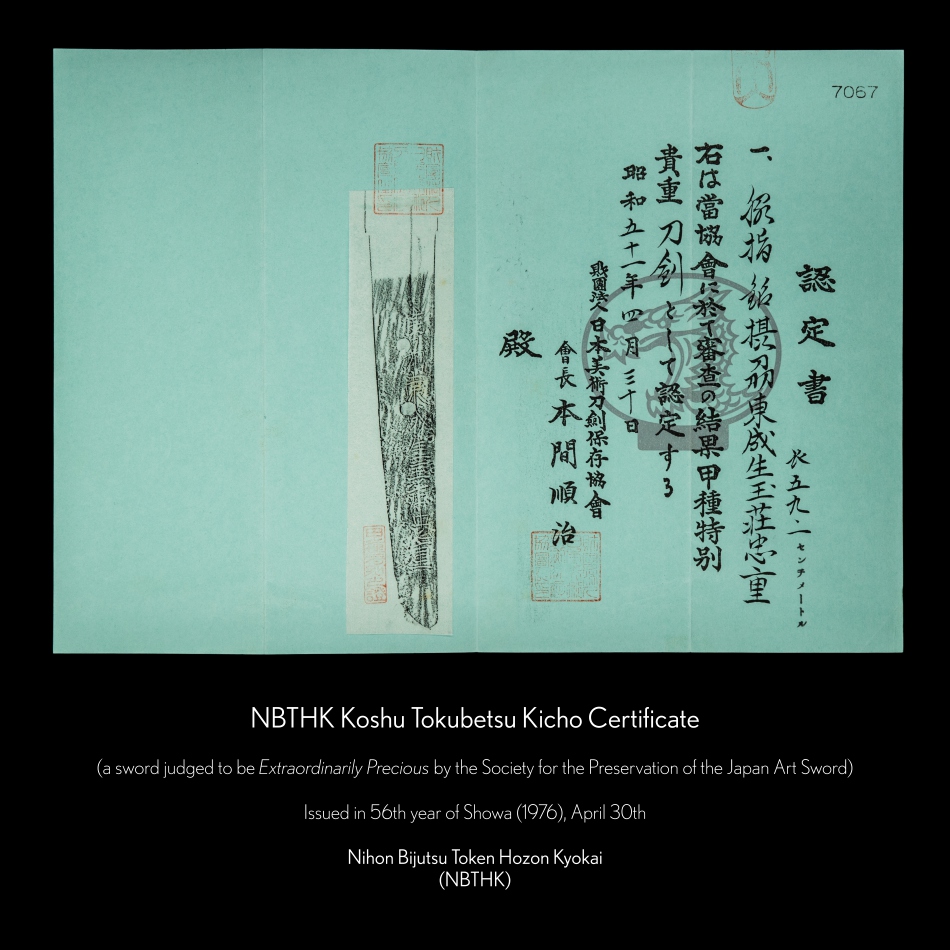NBTHK Certification Paper Ranking (Origami) for Japanese Swords
The NBTHK (Nihon Bijutsu Token Hozon Kyokai), the Society for the Preservation of the Japan Art Sword, was founded in 1948, and remains a highly trusted organization responsible for screening and certifying judgement onto Japanese swords. When a sword is submitted to the NBTHK (known as “shinsa” or judging), the organization reviews and then places a judgement on the piece in question.
These “certification papers” are called origami. The process is a serious one and never taken lightly. It can take anywhere from 3 months to a year in some cases to receive a verdict.
There are two systems, an old (former) one and a new one that started in 1982. Below is an illustration of the two systems in terms of when they were issued and their general rank or prestige (not official). Below the illustration we’ll describe each of the certificates in further detail.
Be sure to also visit the Paper Rankings (Origami) for the NTHK-NPO organization for an overview of their respected certificates as well.
HOZON – Worthy of Preservation (yellow paper)
HOZON is the first of four (four being the greatest) levels of honorable distinction. This certificate essentially dictates that the sword is “Worthy of Preservation.” It must be stressed that this is no small task to achieve. It is not uncommon for a sword dealer to submit ten swords for judgement and only receive two HOZON swords.
Criteria for HOZON Distinction (unofficial translation from the NBTHK)
1. If the sword is ZAIMEI (a signed tang or nakago), the signature must be correct (not fake). If the sword is MUMEI (unsigned tang), the blade’s period of creation, province and school should be recognizable to pass judgement.
2. Should the sword pass Criteria 1, the blade should still be aesthetically worthy of appreciation despite the fact it may have a few scratches or look tired.
3. If the sword was made by very famous swordsmith before Nanbokucho period (before 1333), the JI (surface) and its NAKAGO (tang) will be carefully examined.
4. If the body’s surface (Jihada) has been repaired, it should not detract from its original beauty.
5. For modern swords produced in the Meiji Period and Taisho Period), they must be in good condition and must be ZAIMEI (signed tang) and Ubu Nakago (original, unaltered tang).
6. If the sword is recognized as GIMEI (fake signature) or made to look like MUMEI, the blade will not pass.
7. If there is a chip in the blade, it will not pass.
NBTHK Hozon certificates can also be issued for koshirae or fittings, such as the fuchi-kashira below :
TOKUBETSU HOZON – Especially Worthy of Preservation (brown paper)
TOKUBETSU HOZON is the second of four levels of honorable distinction. For a sword to receive TOKUBETSU HOZON, the sword would have had to clear the above seven HOZON criteria to such a fantastic degree to realize such importance. When swords achieve such standing, their value increases substantially.
NBTHK Hozon certificates can also be issued for koshirae or fittings, such as the tsuba below :
JUYO TOKEN – Important Work
(paper photo and/or oshigata rubbing of tang)
JUYO TOKEN (third or four levels) and TOKUBETSU JUYO TOKEN (the very highest achievement) hold considerable prestige. There are approximately 10,000 JUYO blades in existence, and of that only about 700 are certified TOKUBETSU JUYO TOKEN. Considering there are about 2 million blades registered in Japan, it’s a tremendous honor. These blades are considered the pinnacle of Japanese sword excellence, and with this, naturally carries a very hefty price tag.
JUYO TOKEN origami was introduced in May of 1958 (Showa 33). TOKUBETSU JUYO TOKEN started in 1971.
TOKUBETSU JUYO TOKEN – Especially Important Work (The Very Highest Achievement)
(paper with photo and/or oshigata rubbing of tang)
LIST OF NATIONAL TREASURES OF JAPAN (CRAFTS: SWORDS)
Many customers who meet us for the first time tell us that they were under the impression that all Japanese swords were protected and forbidden to leave the country. This is, obviously, incorrect.
Such as the sword illustrated above (Ko-Bizen Tomonari), there are about 110 swords that are said to possess “especially high historical or artistic value” and these pieces are protected by Japan’s Ministry of Education, Culture, Sports, Science and Technology from ever leaving the borders of Japan.
To read about these pieces, please access the following link on Wikipedia.
https://en.wikipedia.org/wiki/List_of_National_Treasures_of_Japan_(crafts:_swords)
https://en.wikipedia.org/wiki/List_of_National_Treasures_of_Japan_(crafts:_swords)
NBTHK Application Process
The process of obtaining an NBTHK HOZON certificate, requires submission on particular days within the calendar year directly in person to the NBTHK. We at Unique Japan, can happily apply for such certification for our customers. The final cost depends on whether the sword realizes certification or not.
Regardless of the quality of the sword, the first application can only ever achieve HOZON or TOKUBETSU HOZON.
For a blade to be in a position to apply for NBTHK JUYO level distinction, the sword must first achieve TOKUBETSU HOZON.
Granted, should a the sword will be victorious in its JUYO pursuit, its value climbs astronomically and therefore would be considered a wise investment.
IMPORTANT NOTE: Just because a sword is rated TOKUBETSU HOZON, does NOT necessarily mean that it failed JUYO TOKEN. It is likely that the sword was not applied for JUYO status given the cost and limited application windows of opportunity.
Older Certificates from NBTHK…
KICHO TOKEN – Precious (white paper)
These certificates were issued from Sept. 12th 1948 up until June of 1982. Kicho origami were issued at the main office and local branches, and commonly called a “white paper”. The literal translation of KICHO is “Precious.” This was the only rank issued until the year 1950. After this date, it was issued as the rank below Tokubetsu Kicho.
TOKUBETSU KICHO TOKEN – Especially Precious (deep green paper)
This certificate commenced in March of 1950 (Showa 25) and were issued up until June of 1982 (Showa 57). TOKUBETSU KICHO were issued at the main office and local branches, and commonly called a “green paper”. Tokubetsu Kicho means “especially precious”.
TOKUBETSU KICHO was, in fact, the top rank until the Juyo paper was introduced in May of 1958 (Showa 33). The green paper and the round seal bearing the kanji of “Toku” was first used on Tokubetsu Kicho papers starting in July of 1950 and it remained this way until 1982.
TOKUBETSU KICHO was, in fact, the top rank until the Juyo paper was introduced in May of 1958 (Showa 33). The green paper and the round seal bearing the kanji of “Toku” was first used on Tokubetsu Kicho papers starting in July of 1950 and it remained this way until 1982.
TOKUBETSU KICHO TOKEN (USA & JAPAN) – Especially Precious (bright green paper)
This is another and quite rare “Green Paper” that was issued from 55th of Showa (1980) to 57th of Showa (1982) in Japan and the United States. This green paper was the highest level available at the 1980 US NBTHK shinsa. Koshu Tokubetsu Kicho (blue) papers were not awarded in the US.
KOSHU TOKUBETSU KICHO TOKEN – Extraordinarily Precious (blue paper)
In 1973 (Showa 48), the Koshu Tokubetsu Kicho paper (blue paper) was introduced. This very rare and collectible certificate was issued as a rank above TOKUBETSU KICHO (green paper) but below JUYO TOKEN. Only exceptional swords could hope to attain this level of certification. It’s personally one of my favourite levels of NBTHK distinction.
What if a Sword doesn’t have a Certificate?
Sometimes a sword doesn’t have NBTHK certification. Most commonly the reason for this is simply for the fact the sword was held in a private collection and was never submitted to the NBTHK in the first place. For this reason, some very good swords can be acquired less expensively. Submission to NBTHK could then be made after purchase, but of course there is no guarantee that the sword will pass HOZON.
It is important to understand that even if a sword does not have NBTHK certification, for whatever the reason, customers can rest assured that all pieces from Unique Japan are genuine, authentic Japanese swords. Each can be enjoyed for their own unique and endearing qualities. Most of which being the knowingness that Soul of the Samurai continues to live inside the blade.
On that note, if a sword ‘speaks’ to you – you’ll know she’s right for you. It’s a common saying within Samurai circles that a sword always selects its respective owner…
TOROKUSHO (Registration certificate)
A word on registration. All swords in Japan are required by law to be registered with a local prefectural government. This is the sword’s ‘passport’ so to speak, and it needs to stay with the sword at all times. Often this card is wrapped around the saya (scabbard). On the actual TOROKUSHO, information on the blade’s length, curvature, and number of holes in the tang are documented along with any signature present. Each blade has its own unique number.
